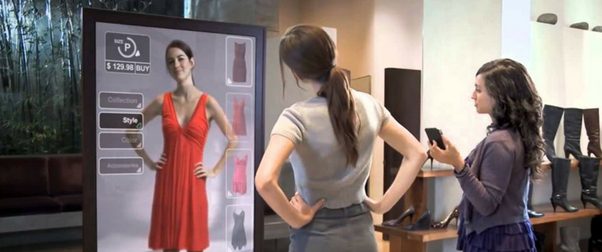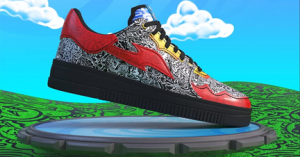From AR/VR dressing rooms to temperature-changing smart fabrics to virtual goods in the metaverse – fashion has always been at the forefront of innovation. It’s forward-looking and cyclical. With Web3, the industry is now stepping into the future, leading to a new reality.
Like many other sectors, the digital transformation of fashion and apparel has radically accelerated during COVID. Far from Zoom calls or runways, the fashion sphere has undergone a severe makeover. With the advent of modern automation, visual-tech artists have gone above and beyond their limits by using AR, VR, AI, and 3D realities within the Metaverse, composed of immersive environments. A bigger portion of this comprises an indefinite furnish of creative artwork in the form of NFTs, avatars, digital identities, clothes, accessories, etc., which have given rise to ‘Hybrid Fashion’.
Hybrid fashion is the need of the hour and the talk of the town; the products used for working from home, attending an office meeting, and participating in weekend activities check all of the fashion’s required boxes. The fashion industry has created beautiful things and expects consumers to follow them. In contrast, millennials have grown up in a world where technology is calibrated to their needs, so they expect their demands to be met by the brands they follow. The ‘see now, buy now’ fashion show concepts and one-day delivery times are evidence of the moves towards faster service for the consumer.
Also read: Generating Conversations Can Lead To Generating Conversions For Brands
Nike: Acquired top brand RTKFT in a quest to launch its virtual sneakers.
Gucci: Engaged in community building through The Gucci Vault Discord
Tommy Hilfiger: Partnered with Nintendo for a new metaverse game, “Animal Crossing New Horizons.”
Louis Vuitton: Launched a unique mobile game app named Louis the Game
Balenciaga: Became the biggest fashion partner for Fortnite
Adidas: Partnered with “Ready Player Me”, which is a famous avatar platform
Why The Increase In Hybrid Fashion?
The synergy of the hybrid model ushers with it a basket full of benefits. Cloth retailers can save on costs by cutting expenses on labour, managing inventory, and marketing and promotional activities. The hybrid concept also allows apparel retailers to concentrate on value-added services given to their consumers. The SS21 collections are full of versatility, such as the Japanese label, Ujoh, which has primarily worked on the idea of multi-purpose clothing in line with its deconstructivist style. The result is a dress that can be cut in half and transformed into a multi-layer skirt. Amid the pandemic, drive-in fashion shows became a safe zone for fashion enthusiasts.
Phygital Clothing – The New Attire Of Every Season?
Part of the beauty of traditional fashion is the ability to wear a story, using physical articles as a tool of self-expression. But now that the digital space is transforming the world around us, it’s time for vogue to be reimagined, too. Digital clothing includes everything we associate with traditional fashion. It celebrates inclusivity and encourages the idea that anyone, regardless of their body type, size, sexuality, or gender, can wear anything. The convergence of somatic and digital worlds is often referred to as phygital.
The trend is one of the main reasons marketers are preparing for an Extended Reality (XR) where the products we buy are represented in both the physical and digital world. Many will routinely add augmented reality (AR) filters before sharing an image online, and this tendency is beginning to impact the fashion world.
For example, the creator of ‘This Outfit Doesn’t Exist’ brings virtual clothing ranges to life as they increasingly turn to digitised fashion to zhoosh up their Instagram feed. However, digital fashion isn’t tangible. This means that a world with only digital fashion will remain a distant realisation until the technology is made accessible to everyone.
AI-guided stock management, promotion, and price optimisation are huge in fashion. Concepts like light pollution, cosmic arts, space travel and 3D fashion may soon become a reality in the global fashion domain. The Metaverse may also get populated with designer outlets, branded clothing, 3D fashion weeks, and much more. This is an era in which the public won’t buy just physical clothes and accessories but digital identities and virtual customers. Fashion in the metaverse sounds cool, but will it take a repulsive turn soon?


























